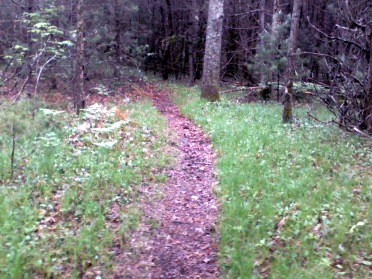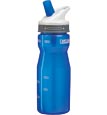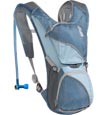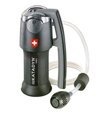Hiking Tips
with the south shore hiking trails in mind


Hiking tips on the south shore?
Most hiking on the south shore is generally a short, sweet and easy affair leading one to believe that not much is needed in this way.
Yet, I can personally attest to many an intended "short hike" that I wished I'd put a little more thought into as it would have made the day much more pleasant.
Most of the trails listed here have
received a rating in the trail length
in theTrail Quick Facts.
If it received a short rating then
most likely not much is needed
in planning the hike.
Any trails receiving the higher ratings of moderate to extensive have the potential to turn into something not planned and possibly unpleasant or stressful.
Water:

Here's one thing that can make or break the day! Long before the hike starts while at home, a smart hiker will start hydrating before they hit the trails. Starting a hike dehydrated only leads to irritation and distraction.
Loading up just before the hike may not be wise either as once you get to the trail you will find yourself looking for somewhere to "go". If it goes in quickly it will come out the same way. Not really how you want to start a hike.


Starting hydration a few hours before your hike is a good hiking tip. Another thought is whether you need to carry some water with you. There are plenty of hikes on the south shore that can take some extended time. If you have never been in an area you may not be a good judge of how long that hike will actually take. You may want a water bottle.
Another good choice is a hydration pack. These small to medium backpacks that either contain a plastic "bladder" or a sleeve in the pack to slide one in. These are essentially a pouch with a hose leading from them with a mouthpiece for sipping on the go. The other benefit to these is the extra carry space for other items needed on a hike.
If you are carrying a back pack then a water filter is another possibility for attaining water... if you know there are reliable water sources available. This option may be costly and overkill for those who only are interested in day hikes. If you plan to work up to an overnight wilderness adventure testing your equipment on smaller hikes is usually a good idea.
If you decide with the water filter option, this brings us to another important hiking tip... taking time to research the area you are visiting. You will need to know where the water sources are in order to filter water. Or if filtering water from the area is even a good choice in the first place. Gathering all the information you can on the area, printing and bringing maps that you can find is especially helpful.
Weather:
Check that forecast!
This is a hiking tip many overlook before heading out. Just because you woke up to a beautiful sunny day doesn't mean it will stay that way.
THIS IS NEW ENGLAND! If you live here, you know the saying, " if you don't like the weather just wait a minute". Most times it works in reverse to "What happened"???
If the weather is going to change drastically then bringing appropriate clothing for that change is a good idea. Of course the best hiking tip here is be reasonable. If the weather is going to change severely, putting safety at risk, then putting that hike off for another day is the best plan.
Preparing for weather naturally leads to hiking tips about clothing. No matter what the weather there is appropriate clothing for all hikes. In every season you need clothing that lets perspiration dissipate. If you wear cotton it will absorb your sweat but then the clothing will be wet. Very hazardous in winter!! Uncomfortable and an insect attractant in warm weather. A material that is a cotton mix is the best of the two worlds. Carry extra clothing for that possible weather change.
A light shell for wind, lightweight fleece for a temperature drop.

Hiking dangers:

A big concern to hiking can be the time of the year and the hazards that exist during that season. There can be many concerns such as insects, poisonous plants and animals to beware of.
Here on the south shore one of those concerns are ticks. Tick season can start as early as late march or early April. Deer ticks are of particular concern in the New England area. A good insect repellant is needed from April right thru November if the fall is mild. I recently was surprised by a tick attaching itself to me while exploring a trail in November. I can tell you I have NEVER worried about ticks that late into the season!
Shows the danger of letting your guard down and not taking precautions!
There are many people who won't even go in the woods because they abhor ticks. That is a shame. The best way to deal with them is to know the life cycle of ticks and how to remove a tick if you do find one on you.

A big danger on the south shore is poison ivy. Many persons do not have a problem with this plant, but as time goes on our bodies change. It is said that our bodies change every seven years. This explains why some that never had allergies gain them at later times. Having a problem with poison ivy is the same. It is the oil of the plant that causes the problem. Avoidance even if you are not allergic is a good habit to be in. Why even test the situation.
One hiking tip that has been heavy on my mind is about hunting season. Here in New England late fall and early winter is the big hunting season. Many hikers myself included do not educate themselves about hunting season. This is an area that many may feel the the hunter is the responsible one. Well I'm sure that is true, but the consequences are just too extreme. A season doesn't go by where there isn't a story about some accident or mistake about what someone is seeing, ect, ect ect. Learn about hunting season hiking here!
Emergencies:
When you think emergency most think injury. Two points to remember. Try not to hike alone (I'm guilty here) and take at least a basic first aid kit. Bandages, first aid ointment, cotton balls or gauze for cleaning.
Include aspirin or ibupropen for pain all packed in a zip lock bag. If you want to go a bit further with that kit add some q- tips, tweezers, moleskin for blisters and toilet paper or tissues.
This again is where carrying a map of the area may come in handy. If there is a big enough problem, you may need a point of exit that is quicker than where you left your car. If an emergency is big enough and you cannot exit on your own, knowing your location is very important. Your cell phone is another handy item in these kind of emergency situations.
As this page said at the beginning most hiking on the south shore is short. There are although some areas that you can spend some considerable time in. The state forest, the state parks,or the Blue Hills Reservation are a few of these. A good practice for any hike is to bring along items for the worst case scenerio. That scenerio being lost and in the forest overnight. A flashlight and a way to start a fire should be part of that emergency kit.
Now I come to the last two items on my hiking tips list. Sunscreen (in all weather) and food of some sort. It's always good to have some sort of little food items. If the hike lasts longer than you expected you will at least have something to hold you over till you reach home. If you do end up in that worst case scenerio you will certainly be glad you thought to bring some food.
You can certainly take a hike on any of the trails on the south shore and not need to take anything with you. If problems do arise and you have observed these hiking tips, having put a plan in place will be your saving grace.
- South Shore Hiking Trails ›
- Hiking Tips


New! Comments
Have your say about what you just read! Leave me a comment in the box below.